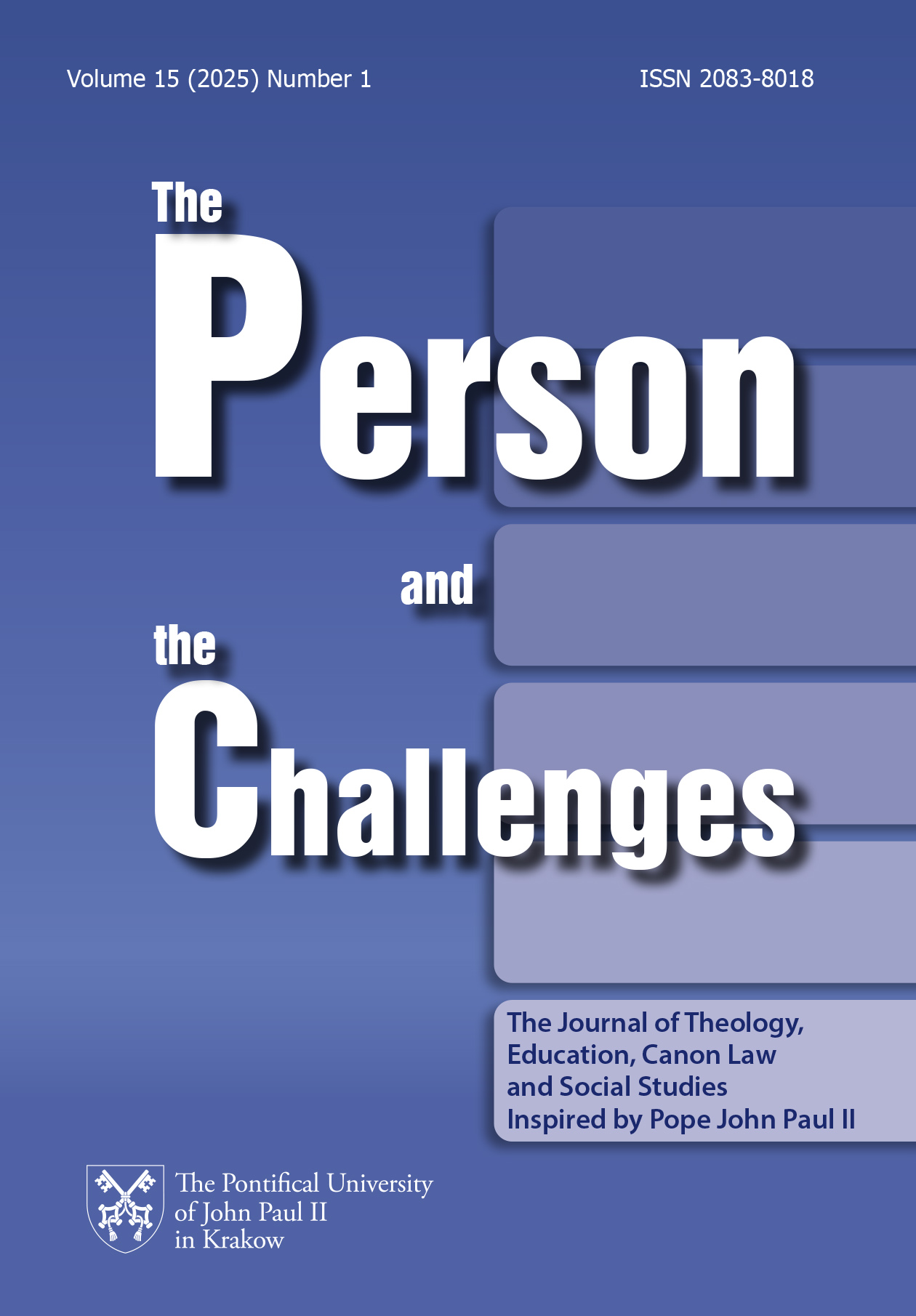The Nicene Christology: “Homoousion to Patri”
DOI:
https://doi.org/10.15633/pch.15104Słowa kluczowe:
Council of Nicaea, Jesus Christ, Son of God, homoousios, Arius, gnosisAbstrakt
Pagan Rome persecuted the Church for nearly 300 years. The apogee of that persecution occurred during the times of Diocletian and Galerius in the late 3rd and early 4th centuries. Hence, it is hard to imagine that the next emperor, Constantine the Great (+337), embraced the Christian faith and proclaimed the freedom to practice this religion. At the same time, Arius (+336) sparked a great theological dispute with his understanding of the singularity and transcendence of God, which concerned the central question: is Jesus Christ a creature, subordinate to God, or is he God? Emperor Constantine became personally involved in this dispute, convened a council, and proposed the decisive word of the Nicene Creed: homoousios. Where did the emperor get this word? He probably borrowed it from Bishop Hosius of the Córdoba (+359). To more fully understand the meaning of this central concept, it is necessary to delve, on the one hand, into the earlier – Gnostic – understanding of the word, and, on the other, into the erroneous teaching of Arius, which the Council of Nicaea condemned. In its Creed, it stated that the Son of God is begotten, not made, and is of one substance with the Father, that is homoousion to Patri.
Bibliografia
Athanasius the Great, De sententia Dionysii 17, transl. by A. Robertson, From Nicene and Post-Nicene Fathers, Second Series, vol. 4. Edited by Ph. Schaff and H. Wace, Buffalo, NY, 1892. https://www.newadvent.org/fathers/2810.htm (access 2.11.2024).
Auer J., Kleine Katholische Dogmatik, Regensburg 1986, Verlag Friedrich Pustet, vol. IV/1.
Bartnik C. S., Dogmatyka katolicka, Lublin 2012, Wydawnictwo KUL, vol. I.
Bartnik C. S., Syn Boży. W teologii, in: Encyklopedia katolicka, Lublin 2013, Towarzystwo Naukowe KUL, vol. 18, col. 1320–1322.
Górecka M., Memoria Dei et hominis. Christliche Gedächtniskultur der Literatur des deutschen Frühmittelalters, Lublin 2019, Wydawnictwo KUL.
Grillmeier A., Jesus Christus im Glauben der Kirche, Freiburg i. Br. 1989, Herder, vol. I.
Hirschberger J., Geschichte der Philosophie, Freiburg i. Br. 1981, Herder, vol. 1.
Kannengiesser Ch., Homo(o)usios, in: Lexikon für Theologie und Kirche (Sonderausgabe, Freiburg i. Br. 2006), Herder, vol. 5, col. 252–253.
Kopiec J., Homousios, in: Encyklopedia katolicka, Lublin 1993, Towarzystwo Naukowe KUL, vol. 6, col. 1196.
Kotkowska Elżbieta, Nicejskie ΌΜΟΟΎΣΙΟΣ w procesie inkulturacji wiary w Bóstwo Syna. Studium teologicznofundamentalne na tle tradycji, Poznań 2015, Uniwersytet im. Adama Mickiewicza. Wydział Teologiczny.
Lohse B., Epochen der Dogmengeschichte, Stuttgart 1988, Kreuz.
McGrath A. E., Der Weg der christlichen Theologie, transl. Christian Wiese, München 1997, C. H. Beck.
Menke K.-H., Jesus ist Gott der Sohn. Denkformen und Brennpunkte der Christologie, Regensburg 2012, Verlag Friedrich Pustet.
Ptolemy, Letter to Flora in: The Gnostic Scriptures, transl. by Bentley Layton, London 2021, New Haven, pp. 446–447.
Schmaus M., Glaube der Kirche, St. Ottilien 1979, vol. 2, EOS.
Schmaus M., Glaube der Kirche, St. Ottilien 1980, vol. 4/2, part. 2, EOS.
Sobór Nicejski I (325), in: Dokumenty soborów powszechnych. Tekst grecki, łaciński, polski, arranged and compiled by A. Baron, H. Pietras, Kraków 2002, Wydawnictwo WAM, vol. I, pp. 21–61.
Reale G., Historia filozofii starożytnej, transl. E.I. Zieliński, Lublin 1999, Wydawnictwo KUL, vol. IV.
Ziegenaus A., Jesus Christus, Die Fülle des Heils. Christologie und Erlösungslehre (Katholische Dogmatik, vol. IV), Aachen 2000, Michael Müller Verlag.
Pobrania
Opublikowane
Numer
Dział
Licencja
Prawa autorskie (c) 2025 Krzysztof Góźdź

Utwór dostępny jest na licencji Creative Commons Uznanie autorstwa 4.0 Międzynarodowe.
Autorzy publikujący w czasopiśmie udzielają jego wydawcy zgody o następującej treści:
- Autor zachowuje autorskie prawa majątkowe do utworu, a jednocześnie udziela wydawcy czasopisma zgody na jego pierwszą publikację w wersji drukowanej i wersji online na licencji Creative Commons Uznanie autorstwa 4.0 Międzynarodowe oraz zgody na wykonywanie opracowań, w tym przekładów.
- Autor ma możliwość udzielania zgody niewyłącznej na opublikowanie utworu w wersji, która ukazała się w czasopiśmie (np. zamieszczenia go w repozytorium instytucjonalnym lub opublikowania w książce), wraz z informacją o jego pierwszej publikacji w czasopiśmie.
- Autor może umieścić swój utwór online (np. w repozytorium instytucjonalnym lub na swojej stronie internetowej) jeszcze przed zgłoszeniem utworu do czasopisma.

